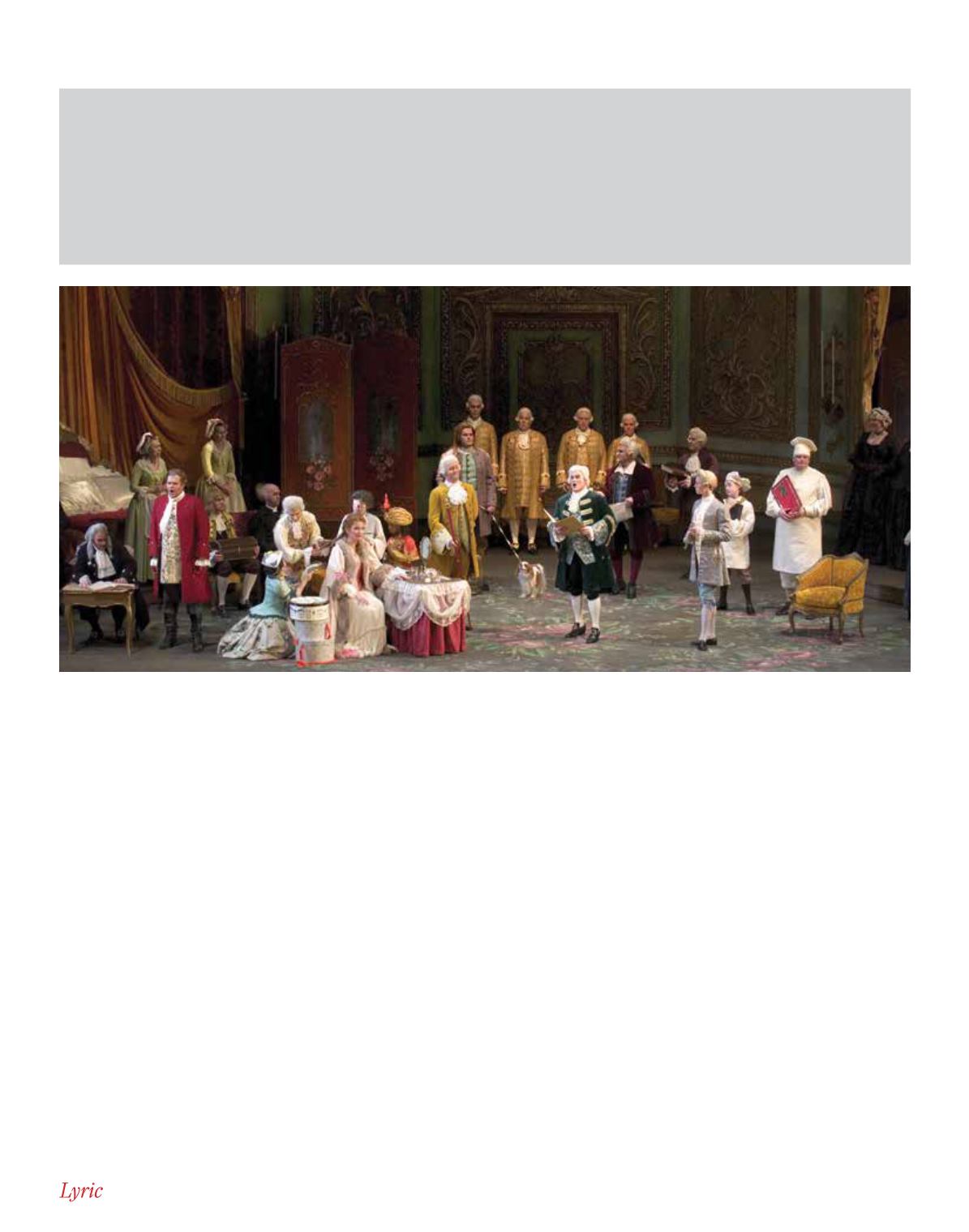

O P E R A N O T E S | L Y R I C O P E R A O F C H I C A G O
February 8 - March 13, 2016
|
29
Born for One Another: How Strauss and Hofmannsthal
Brought
Der Rosenkavalier
to Life
By Mandy Hildebrandt
A singer (Bruce Sledge) performs for the Marschallin (Anne Schwanewilms) during her morning levée:
Act One of
Der Rosenkavalier
at Lyric, 2005-06 season.
ROBERT KUSEL
It would be difficult to find two men more
different in personality and artistic views than
Richard Strauss and Hugo von Hofmannsthal,
and probably few would have bet money on
their partnership’s success. The former was
a demanding and sometimes petty Munich
native, the latter an ultra-sensitive and tem-
peramental Viennese. The two never shared a
social friendship but, surprisingly, they made
their professional relationship work. In fact,
they became one of the most celebrated operat-
ic composer-librettist teams since Mozart and
Da Ponte. This success proved true the predic-
tion of Strauss, who’d written to Hofmannst-
hal in 1906, “We were born for one another
and are certain to do fine things together.”
Their partnership lasted 23 years and produced
six operas, of which
Der Rosenkavalier
– an
astonishing examination of feminine psychol-
ogy in a bittersweet comedy, set to a ravishing
score – is unquestionably the most popular.
In early 1909 they’d just completed
Ele-
ktra
when Hofmannsthal approached his col-
league with a new scenario. What would
ultimately become
Der Rosenkavalier
started
as a romantic-burlesque plot set in 18th-
century Vienna, with dashing Octavian out-
witting lecherous Baron Ochs for the hand of
young Sophie. At that point the figure of the
Marschallin was still a mere shadow, but her
importance would increase beyond all recogni-
tion as the opera progressed.
One of Hofmannsthal’s inspirations was
Mozart’s
The Marriage of Figaro
, and there
certainly are some parallels between the two
operas: in each, three principal roles (one of
them a trouser role) are sung by sopranos,
and the principal male singers are baritones or
basses, with various tenors relegated to subsid-
iary comic parts. As with Mozart’s Cherubino,
there’s an extra plot twist that finds Octavian
impersonating a girl: thus, a soprano portrays
a man pretending to be a woman!
As soon as he’d received Act One from
Hofmannsthal, Strauss began working on the
score with huge enthusiasm. (Years afterward,
he commented that the wonderful text practi-
cally set itself to music!) Hofmannsthal’s Act
Three took many months to complete; he
wanted to do the opera full justice, and insisted
on waiting for the right mood to come over
him before creating a certain scene. Strauss
understood this completely and didn’t mind
waiting more than a year before diving into
Act Three.
Despite this delay, the act that gave them
the most problems was actually the second. In
July 1909 Strauss wrote Hofmannsthal a long
letter with detailed criticisms. He emphasized
that Act Two lacked the “necessary clash
and climax,” and that the audience should
“laugh, not just smile or grin!” Fortunately,
Hofmannsthal was in no way offended; he
respected and admired Strauss’s shrewd sense
of theater, and willingly reworked the act.
Nearly all the final action of Act Two follow-
ing Baron Ochs’s entrance came out of the
composer’s suggestions (including such vital
details as Ochs’s neglecting to tip Annina,
















